Arranged by their Continents or Provenance
(graphics by Giuseppe Sabtelli)115 cardinals under the age of 80 assembled in Rome in March to attend the conclave in the Sistine Chapel and to elect the new Pope. (A cardinal from Indonesia was unable to attend due to poor health, and a cardinal from Scotland withdrew for personal reasons.) The cardinal electors are housed in the Vatican residence Domus Sanctae Marthae, which is independent from the place where they vote, the Sistine Chapel.
All of the elector-cardinals were appointed by John Paul II and Benedict XVI. After seven years, Pope Benedict has appointed the majority of cardinal electors, which represents a very significant change in the composition of the College of Cardinals since 2005.
The votes in any conclave reflect two major concerns on the part of the cardinals. First, there are the pressing issues facing the Church, and second, there is the task of finding the candidate who is the most qualified to deal with them.
Europe has 61 cardinal electors, more than half of the total.
With 28 cardinals, Italy is the country that has the most cardinals.
North America has 14 cardinal electors (US 11 cardinal electors; Canada 3 cardinal electors). The 11 US cardinals who will participate in the conclave to elect a successor to Pope Benedict XVI match the largest US group in election history. The US cardinals represent both residential sees in the United States and offices of the Roman Curia, or the central government of the Church.
Latin America has 19 cardinal electors.
Africa has 11 cardinal electors.
Asia has 11 cardinal electors.
Oceania has only one cardinal elector.
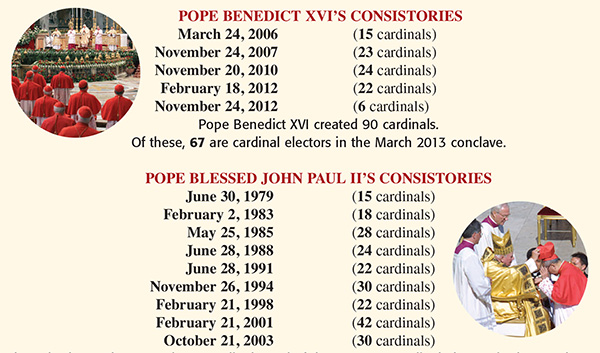
Pope Blessed John Paul II created 231 cardinals, and of these, 50 are cardinal electors in the March 2013 conclave.
S.I. The Society of Jesus (Jesuits)
O.F.M. Order of Friars Minor
O.F.M. Cap. Order of Friars Minor Capuchins
S.D.B. The Salesians of Don Bosco (Salesians)
O.P. The Order of Preachers (Domenicans)
O.S.A. The Order of Saint Augustine (Augustinians)
S.C.I. The Priests of the Sacred Heart of Jesus (Dehonians)
C.SS.R. Congregation of the Most Holy Redeemer (Redemptorists)
C.M. The Congregation of the Mission (Lazarists)
P.S.S. The Society of Saint-Sulpice (Sulpicians)
O.M.I. Oblates of Mary Immaculate
C.M.F. Missionary Sons of the Immaculate Heart of Mary (Claretians)
C.S. Missionaries of St. Charles Borromeo (Scalabrinians)
O.M.M. The Mariamite Maronite Order
The Schönstatt Fathers
The cardinals from Italy make up the largest single national group in the College of Cardinals. Among them are a number of important cardinals from the Roman Curia: Amato, Antonelli, Bertello, Bertone, Calcagno, Coccopalmerio, Comastri, De Paolis, Farina, Filoni, Lajolo, Monterisi, Nicora, Piacenza, Ravasi, Re, Sardi, Vegliò, Versaldi. Also among these cardinals are the archbishops of some of the great cities of Italy: Genoa (Bagnasco), Florence (Betori), Bologna (Caffara), Turin (Poletto), Palermo (Romeo), Milan (Scola), Naples (Sepe) and Rome (Vallini), as well as the emeritus archbishop of Milan (Tettamanzi). Significantly missing is the Patriarch of Venice, Francesco Moraglia. He was made Patriarch of Venice only one year ago, on January 31, 2012, and Pope Benedict did not have time to make him a cardinal before his resignation.
Among these cardinals, the names of Bagnasco, Bertone, Betori, Coccopalmerio, Piacenza, Ravasi and Scola have been mentioned prominently in the Italian and world press as possible “papabili.” However, each of the other cardinals also has noteworthy virtues, from De Paolis, who has handled the reform of the Legionaries of Christ, to Filoni, a respected leader, to Sepe, organizer of the Year 2000 Jubilee, to Caffarra, profound moral theologian, to Amato, friend of Pope Benedict, to Farina, scholar, teacher and humble soul.
The cardinals from Africa represent a part of the world where the Church is experiencing explosive growth, but also facing very special problems, from the spread of Islam to widespread poverty. In 2005, the Roman and Eastern Catholic Churches of Africa numbered approximately 135 million members in a total African population of 809 million. In 2009, when Pope Benedict XVI visited Africa, the number of Catholics was estimated at 158 million. By 2025, 230 million of the world’s Catholics (1/6 of all Catholics) are expected to be African. The world’s largest seminary is in Nigeria.
Among the African cardinals, several have been mentioned as possible “papabili.” These include Peter Turkson of Ghana, Wilfred Napier of South Africa, Robert Sarah of the Pontifical Council “Cor Unum” in the Vatican, and Laurent Monsengwo Pasinya of the Congo. But each of these cardinals has significant virtues, and any one of them might emerge from a Conclave as the next Pope.
Catholicism is growing faster in Asia than in any other region of the world. The global population of Catholics in 2010 was about 1.2 billion (roughly 17.5% of the world’s population). Catholics from Southeast Asia made up 10.8% of that total, up from 10.4% the previous year, according to the Annuarium Statisticum Ecclesiae, a yearbook published by the Vatican’s secretariat of state. (The second-fastest growing Catholic population was in Africa.)Asia as a whole had 130 million Catholics in 2010, up from 126 million the previous year. The number of priests in Asia also increased, with the addition of 1,695 in 2010 (the number of priests in Europe during the same period fell by 905).Among the Asian cardinals, the media has mentioned prominently the dynamic 55-year-old cardinal archbishops of Manila, Luis Tagle. Also mentioned: Cardinal Pell of Sydney, and Cardinal Ranjith of Colombo.
The 14 cardinals from North America and the 19 from Latin America represent some 530 million Catholics, nearly half of all the Catholics in the world. The Catholic Church in the United States counts 78 million members, 25% of the US population. The United States has the fourth largest Catholic population in the world after Brazil, Mexico, and the Philippines. Though for many centuries the Pope was always an Italian, the elections of John Paul II (from Poland) in 1978 and of Benedict XVI (from Germany) in 2005 broke this tradition. Going into the 2013 Conclave, many observers thought a cardinal from the “New World” might be chosen. Among the Americans mentioned prominently were Dolan of New York, O’Malley of Boston, and Wuerl of Washington, D.C. Ouellet, the prefect of the Congregation for Bishops in Rome but originally from Canada, was also mentioned. Once again, however, the unusual circumstances surrounding this Conclave suggested to all that an unexpected candidate might emerge.


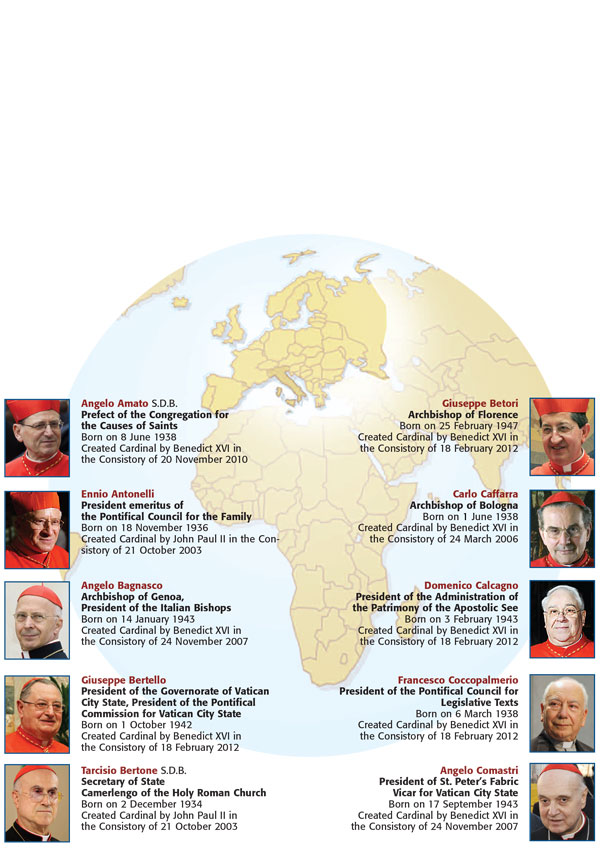
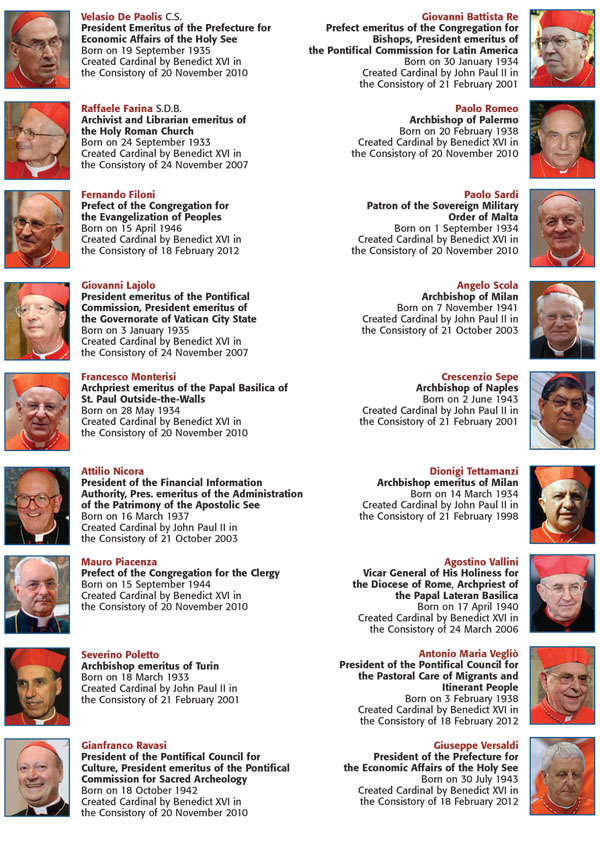

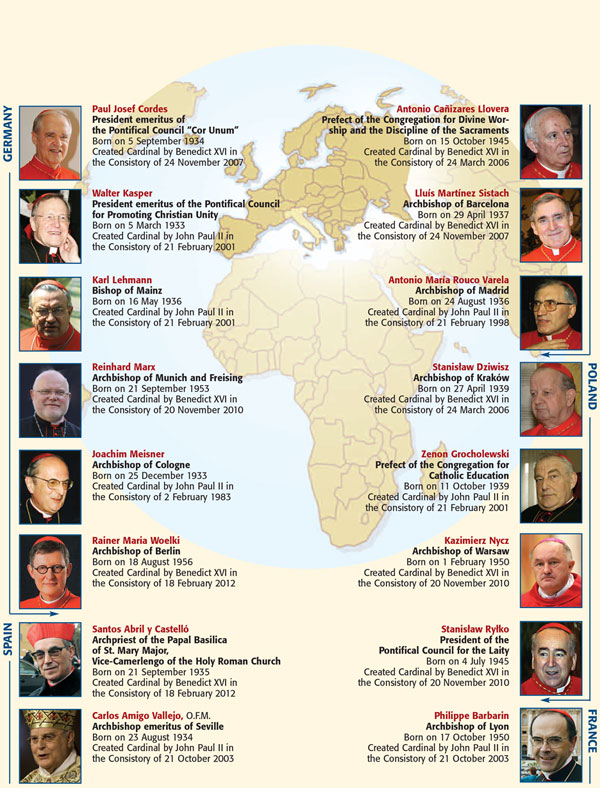
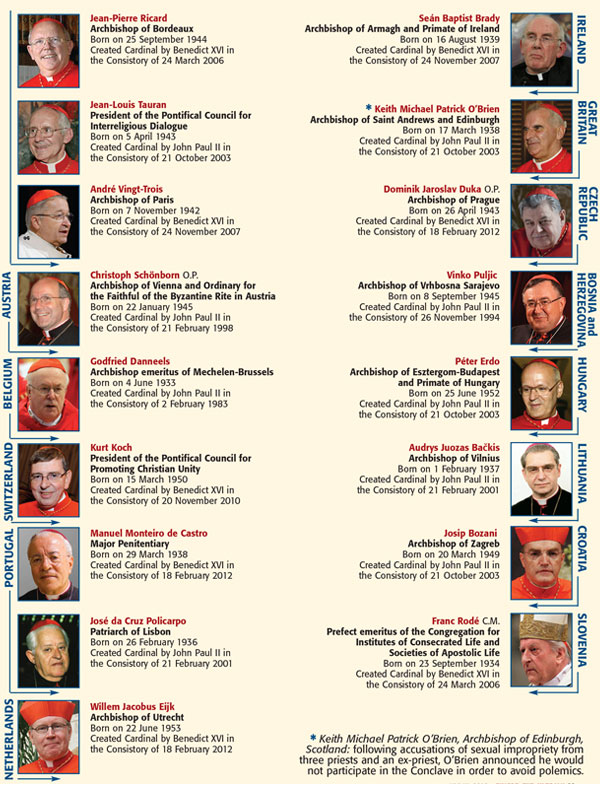

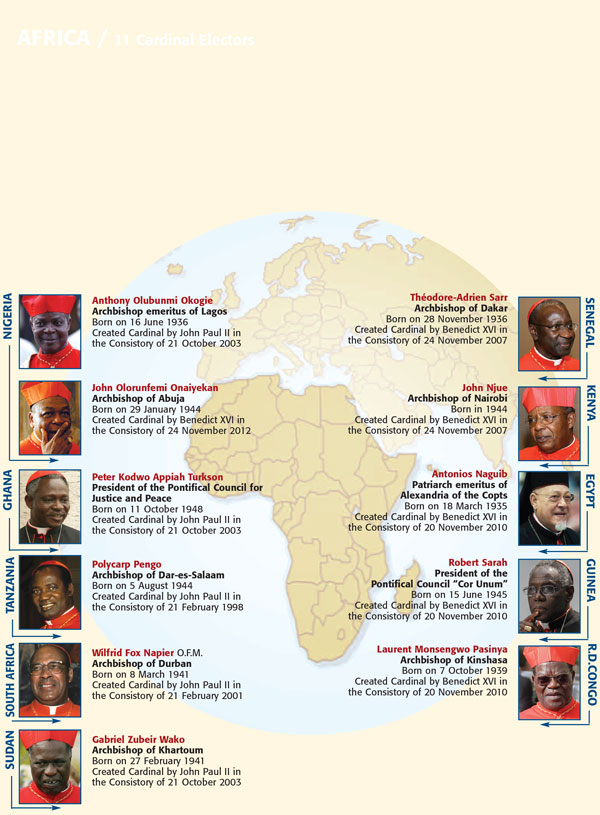
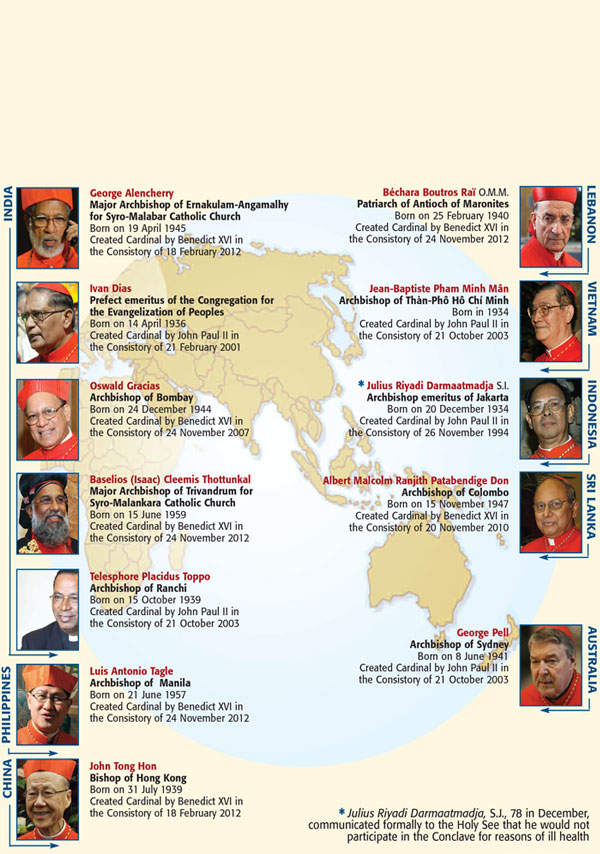
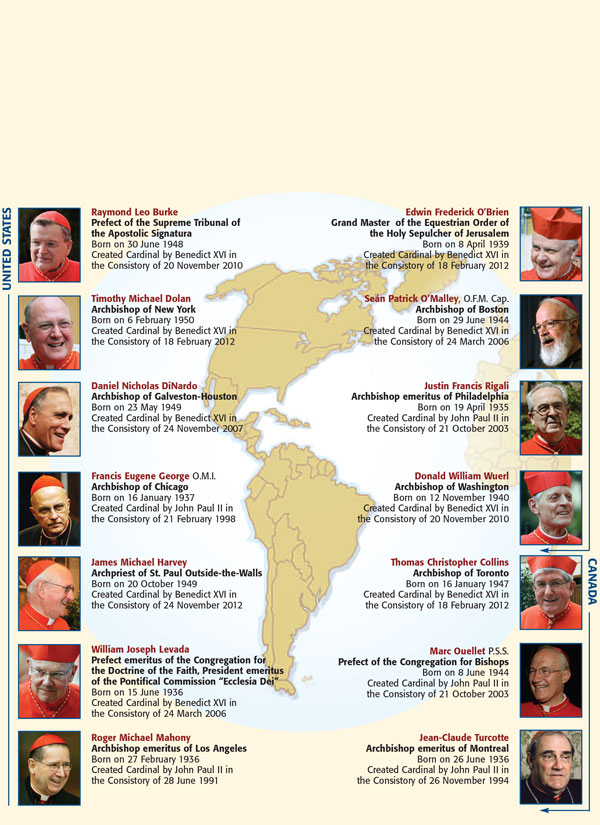
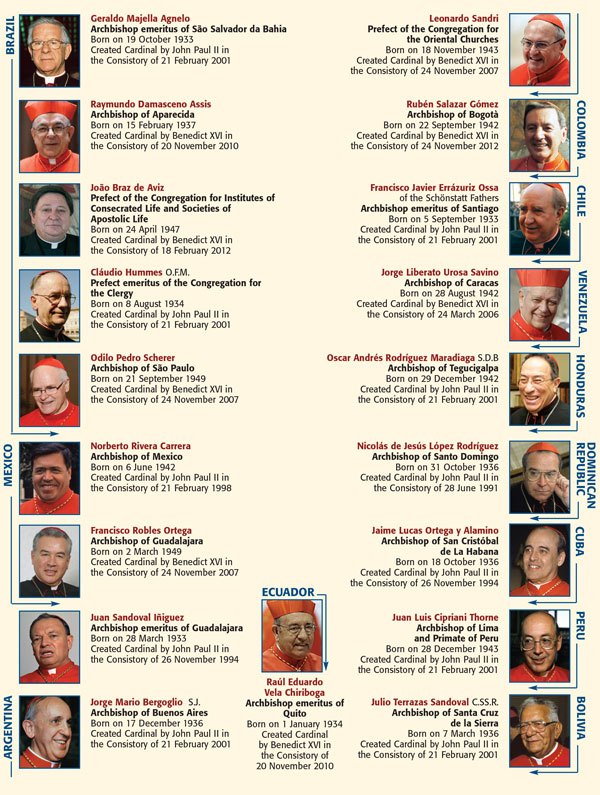



Facebook Comments